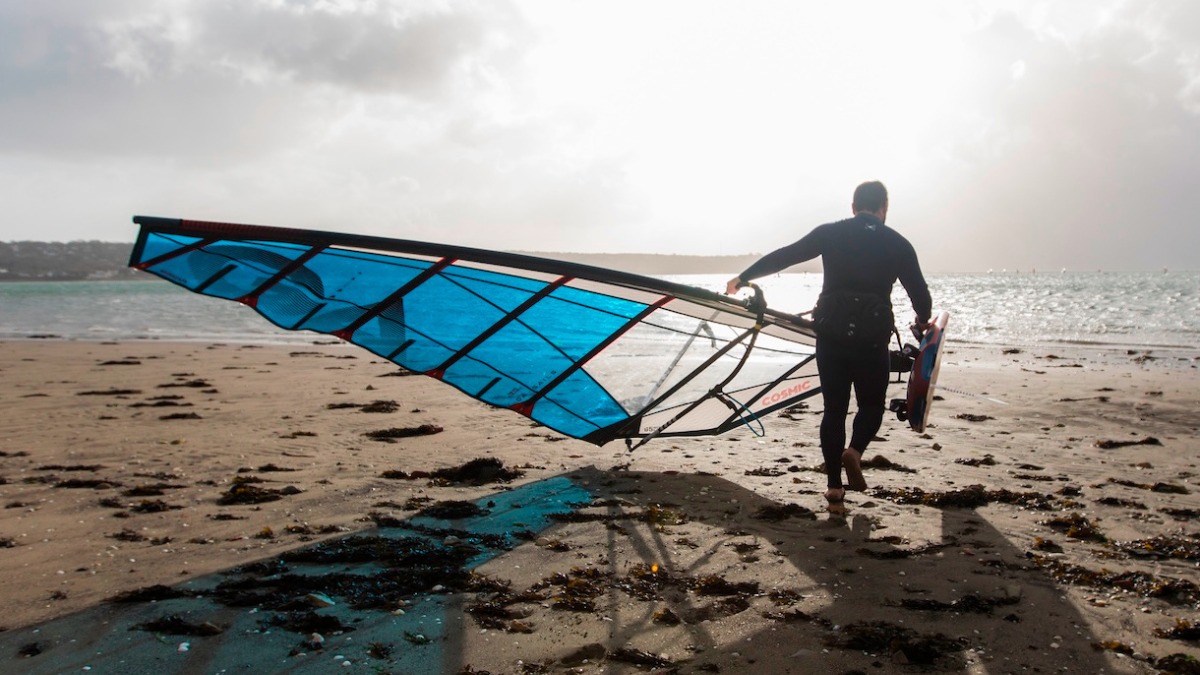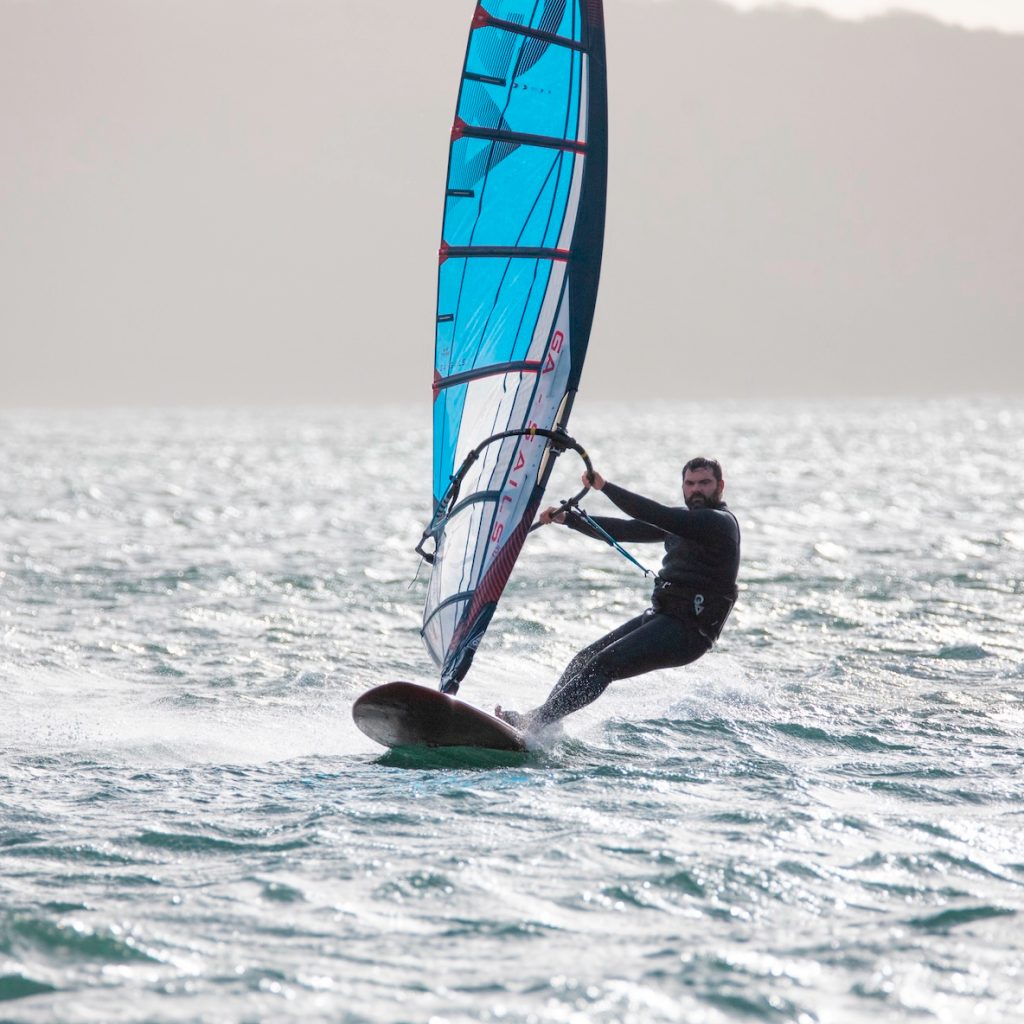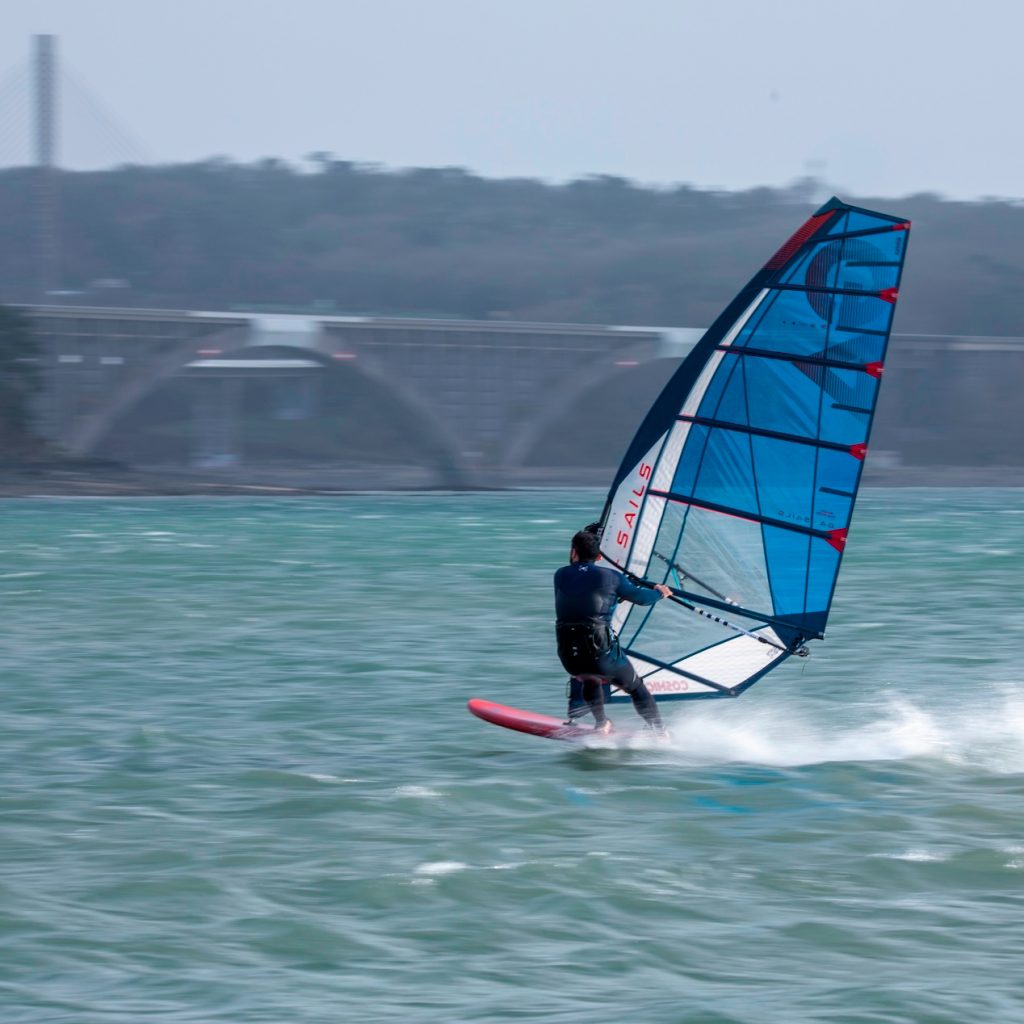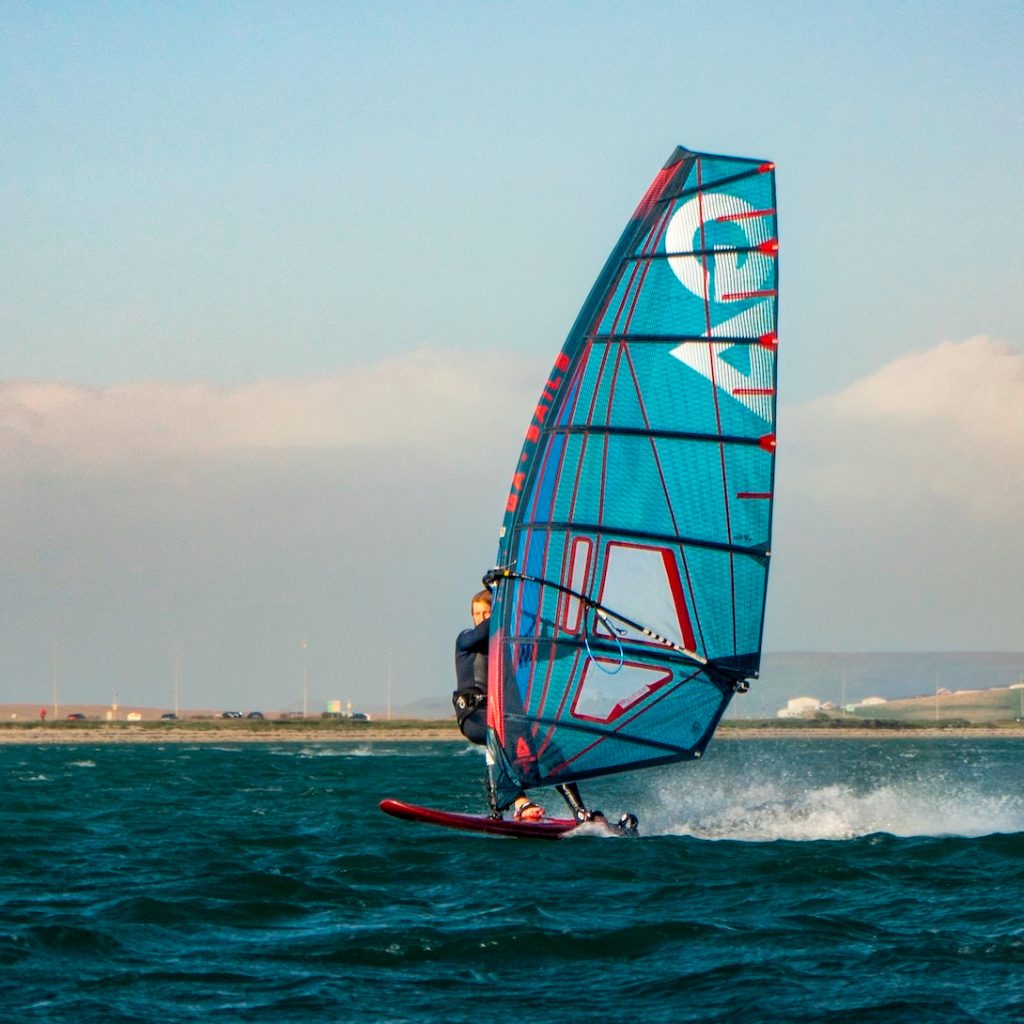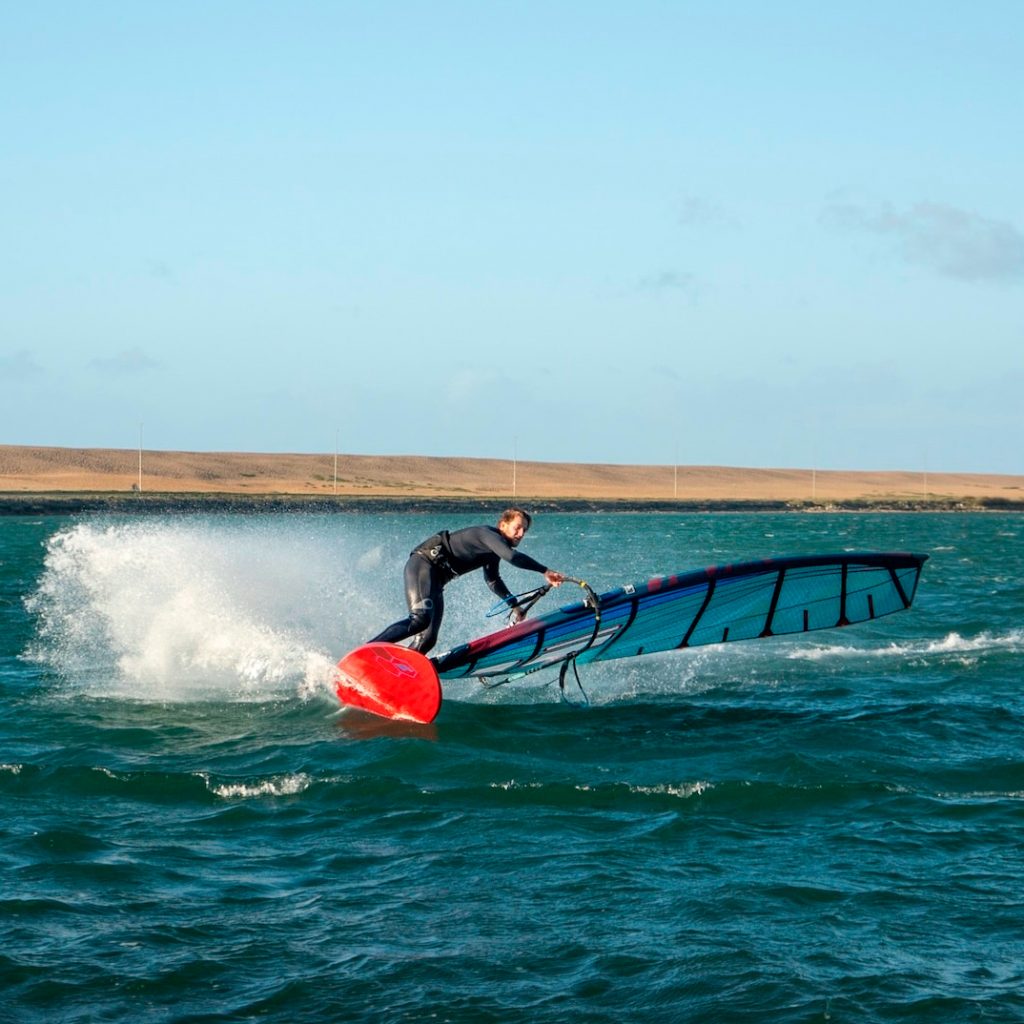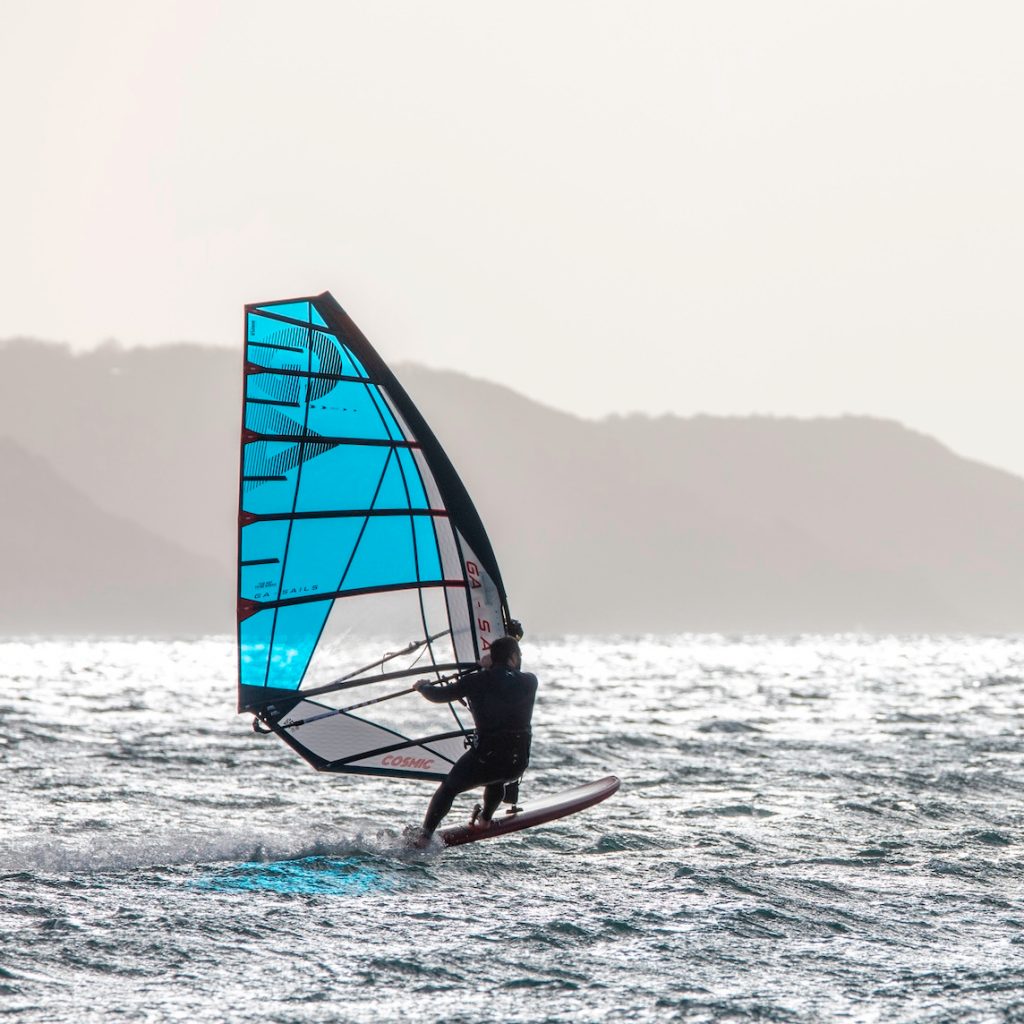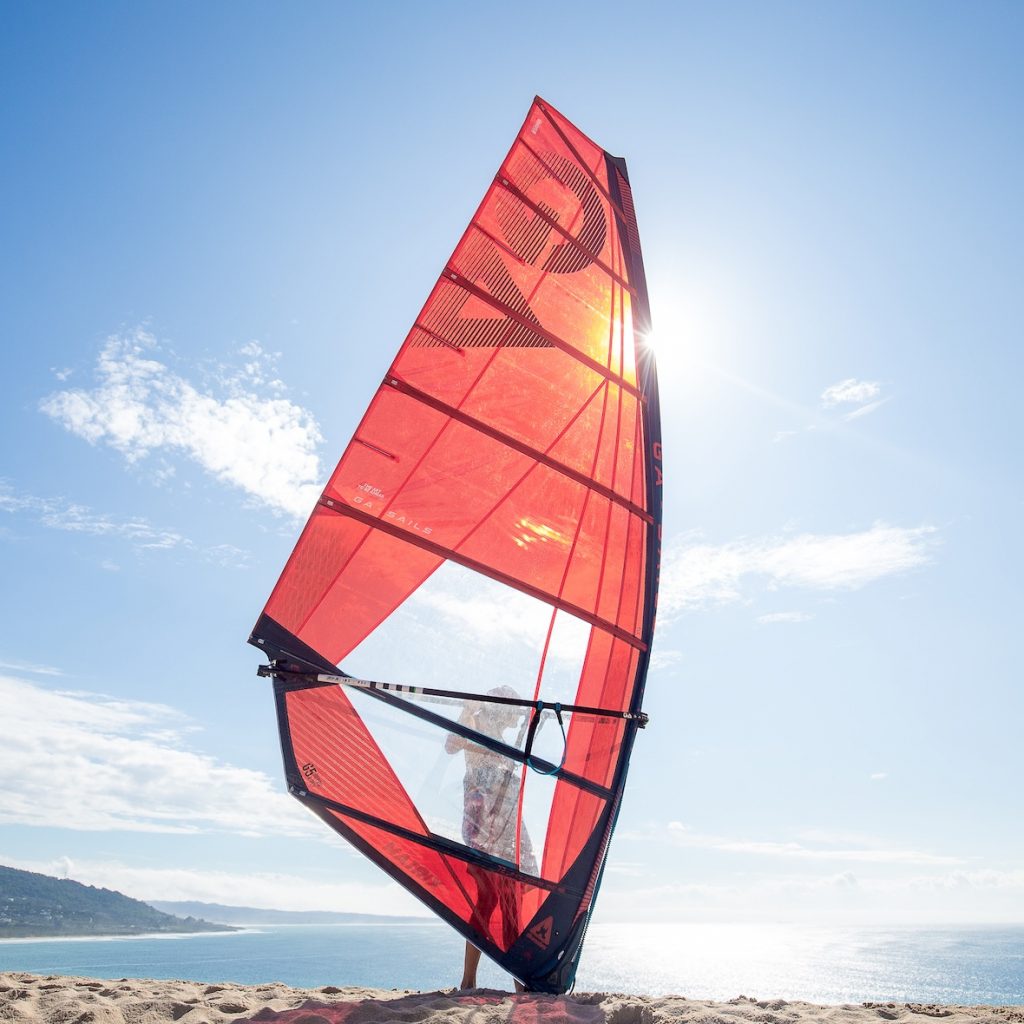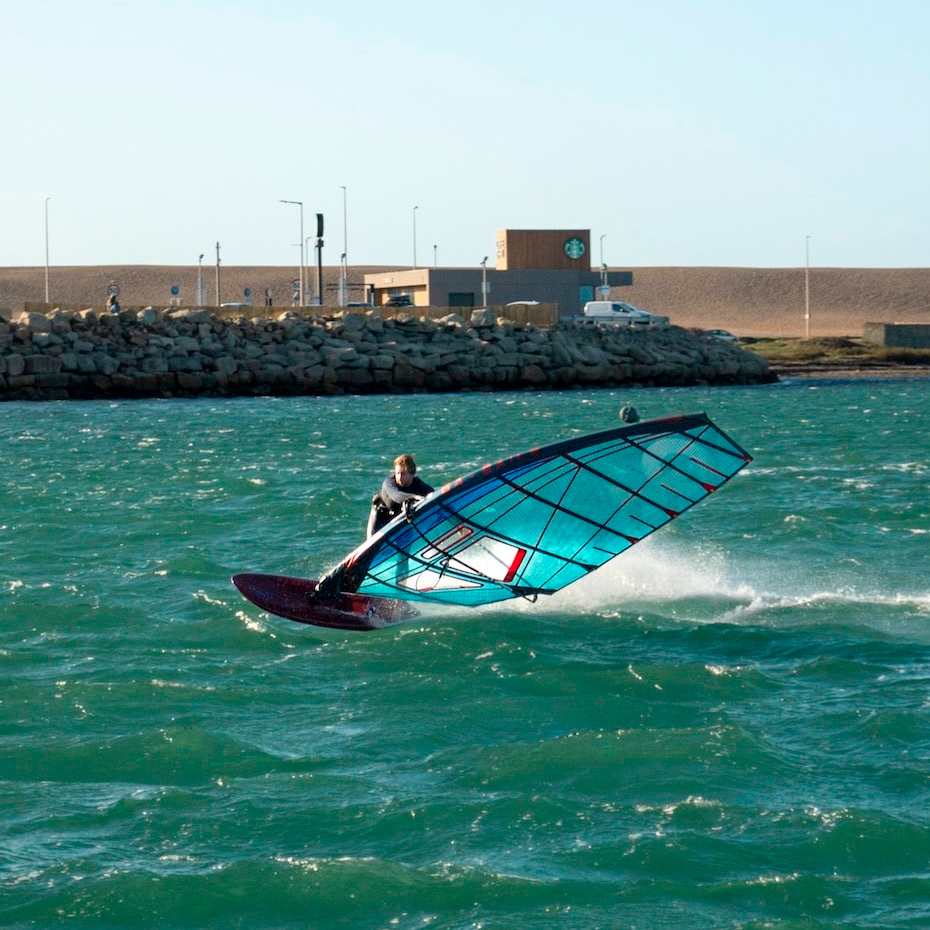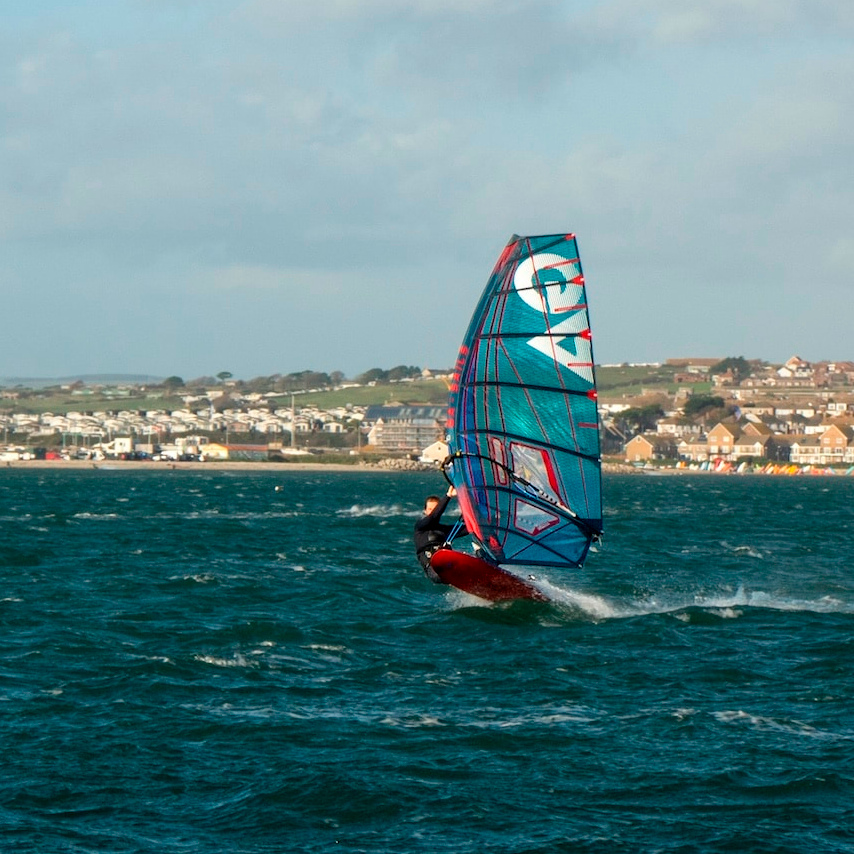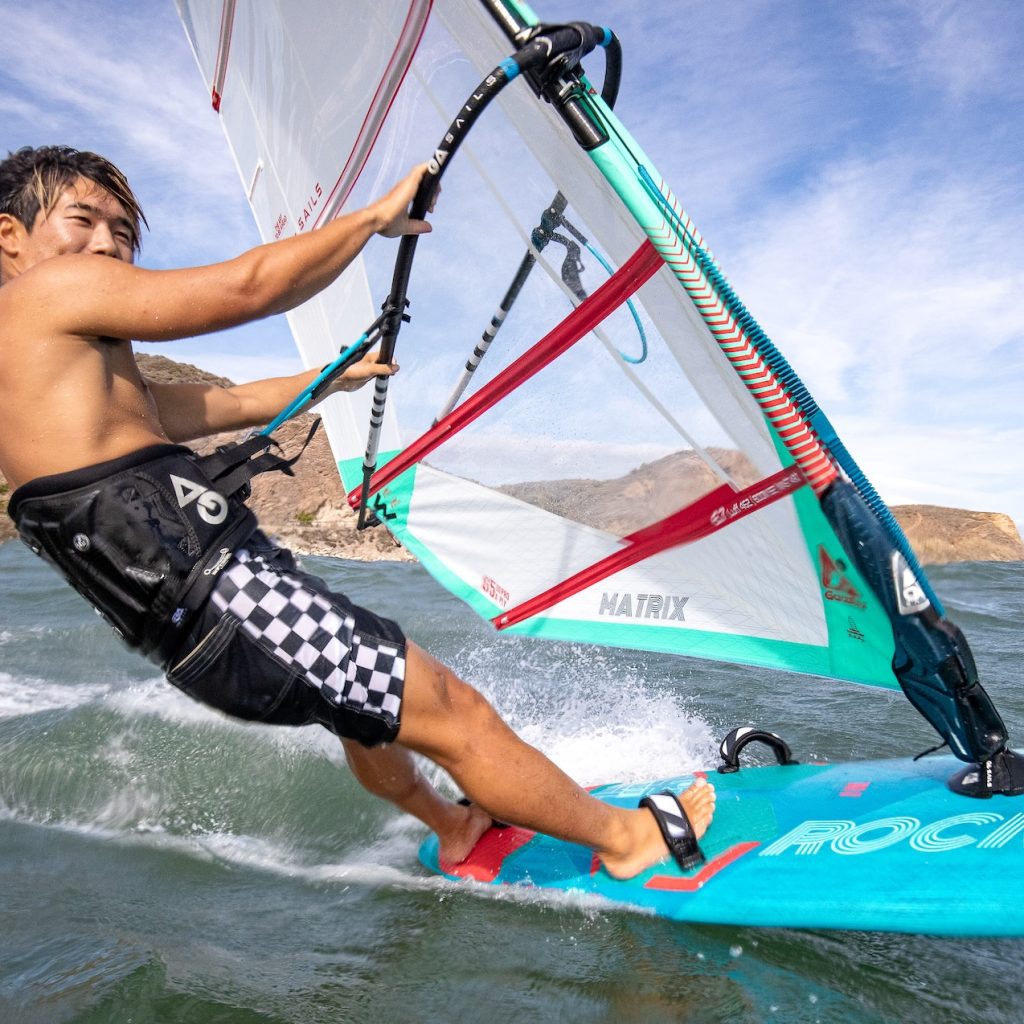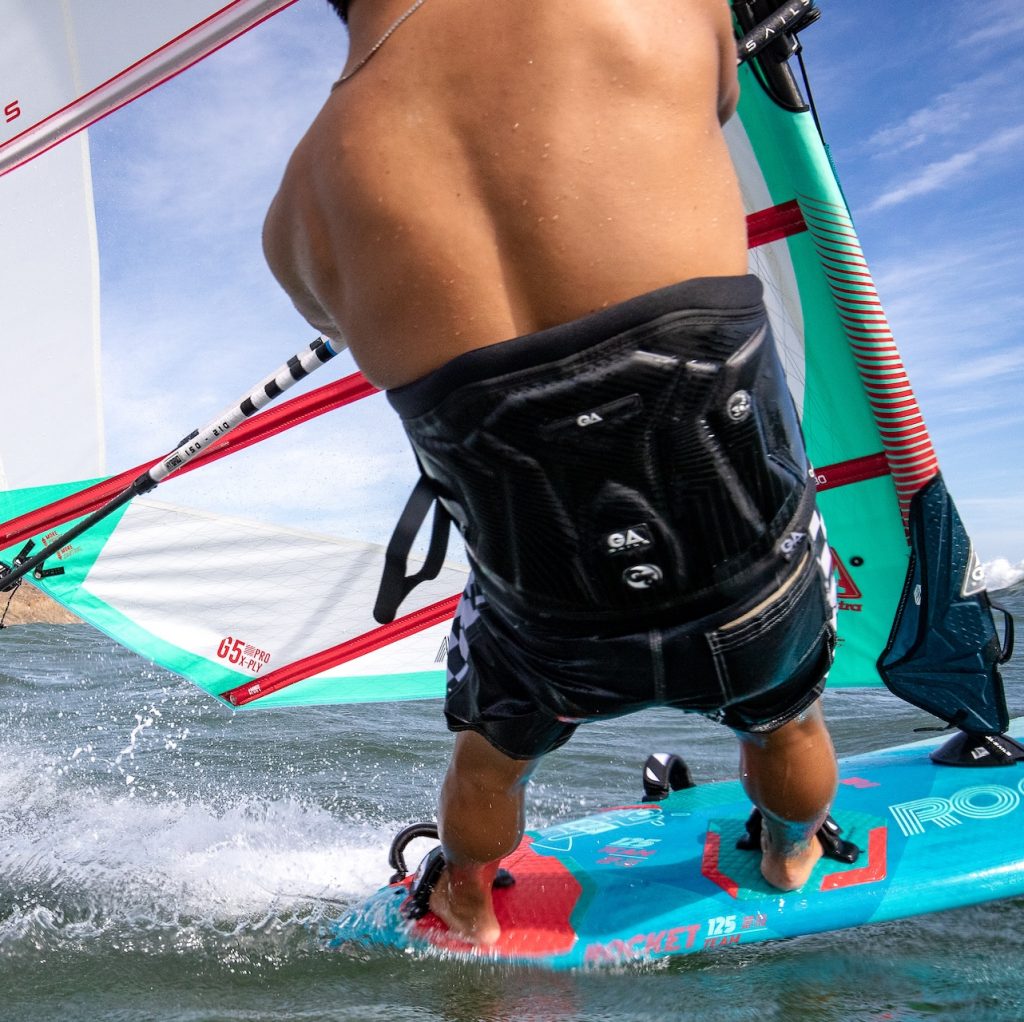Introduction
Gaastra (GA) Windsurfing has kicked off 2025 with a bold redesign in their sail lineup – introducing the Continuous Radial Panel Layout across select models. Notably, the freerace Cosmic (twin-cam), the no-cam freeride Matrix, and its high-tech sibling Matrix-ME now showcase this revolutionary panel construction. These sails look strikingly different from their predecessors – fewer seams, sweeping panel lines, and a distinctly load-oriented design. GA’s goal with this innovation is clear: to deliver smoother handling, improved responsiveness, and greater overall efficiency on the water. In this article, we’ll dive into what the Continuous Radial Panel Layout (CRPL) is, how it works, and why it’s generating buzz among windsurfers eager for performance upgrades.
What is the Continuous Radial Panel Layout?
Continuous Radial Panel Layout refers to a sail construction method where large sail panels are aligned along the sail’s natural load paths in a continuous, uninterrupted fashion. In practice, this means the panels radiate from the center or corners of the sail, following the same lines of force that are created when the sail is under wind pressure. Traditionally, windsurf sails used horizontal or vertical panel layouts with numerous cross seams – for example, many freeride sails had horizontal strips of material stacked up the sail, or combinations of vertical luff panels and horizontal mid-panels. Those older designs inevitably had multiple seam lines where panels met, which could interrupt the flow of load and add weight or flex points. GA’s new layout eliminates most of those cross seams, instead using continuous panel sections that run from the sail’s center out towards the edges (such as from the mast area towards the clew) without breaks. The result is that each panel can “work as one unit” to carry the load, rather than bending or hinging at a seam, giving better feedback to the loads and a more unified response across the sail’s surface.
Illustration of GA’s Continuous Radial Panel Layout, with red arrows indicating primary load paths. The sail’s panels (shaded regions) are aligned continuously along these paths, instead of being segmented by horizontal seams as in traditional designs. By following the arrows (load lines) from corner to corner, the panel material more directly handles tension, improving stability and reducing distortion.
In essence, CRPL is about orienting the sail’s fabric panels along the same lines the wind-generated forces travel. A windsurf sail’s loads typically radiate from the corners – the tack (bottom leading corner), clew (rear corner), and head (top) – toward the center of the sail. By aligning panels to follow those radial force lines, GA ensures the material is loaded evenly and efficiently. This contrasts with older constructions where a seam cutting across a load path could create a weak point or allow the sail to deform more under stress. GA Windsurfing proudly touts this as a “revolutionary” approach, noting that continuous, radially-aligned panels distribute load better, enhance the sail’s stability, and improve responsiveness to rider input. Visually, you can actually see the difference: the 2025 Cosmic and Matrix have a unique panel pattern with broad, sweeping panel sections and far fewer horizontal cut lines – one reason GA themselves asked, “Why do the 2025 Matrix, Cosmic and Matrix-ME look so different compared to other windsurfing sails?”, with the answer being that they share this new Continuous Radial Panel Layout.

Technical Design and Materials
Implementing the CRPL was not just a matter of re-arranging panels; it also required careful choice of materials and modern design tools. GA’s sail designer (Peter Munzlinger) and team leveraged advanced 3D design software to map out the sails’ load distribution and plot the optimal panel alignment. The materials used in these panels are high-quality laminates (monofilm and X-Ply scrims) that can handle tension with minimal stretch. By aligning the fibers in these laminates along the load paths, the panels naturally resist stretching when the sail is powered up. GA describes that the whole panel works in unison under load, rather than only portions of it taking the strain. In the Cosmic and Matrix, you’ll find that critical sections (like the leech and foot areas) use radial X-Ply or 2-ply laminates for tear resistance, while the main body might use lighter monofilm – all oriented according to the new layout. Even the mast sleeve on the Cosmic got an upgrade to a “multi-material” construction (a 2-ply center section with traditional cloth) to better handle loading and give a sportier, responsive feel.
A key aspect of the design is eliminating the interrupting seams. Seams not only add weight and potential weak points, but they also can cause uneven flex (a stiff seam with soft fabric next to it can create a hinge point under load). By largely removing horizontal seams, GA’s continuous radial panels let the sail’s curvature and foil shape be formed with fewer interruptions. The tension flows smoothly from one end of a panel to the other, which in theory maintains the designed sail shape more faithfully when powered. This should translate to a sail that holds its profile in gusts and transmits wind energy into forward drive more efficiently, instead of dissipating energy by flexing at the seams. As one retailer summary put it: “Radially aligned sail panels that run continuously from corner to corner without being interrupted by cross seams can truly work as one unit,” which boosts control and power transfer.
From a materials standpoint, GA didn’t introduce completely new cloth for the Cosmic and Matrix, but by optimizing the panel alignment they can get more out of existing materials. However, they did take material tech to the next level in the Matrix-ME (Membrane Edition). This special version of the Matrix incorporates a laminated membrane with Technora™ fibers, and it fully capitalizes on the continuous radial concept.
The Matrix-ME: Membrane Tech Meets Radial Design
While the standard Matrix uses multiple panels (albeit arranged radially), the Matrix-ME pushes the idea toward a near one-piece sail. It uses an ultra-light laminated membrane where Technora fibers are laid out along the curved load paths and then sandwiched in film. Essentially, the fibers themselves create a spiderweb of radial “panels” within the clear film, so the sail has a single continuous skin reinforced along every critical direction. GA’s designers describe aligning the Technora fibers “following the characteristic curved path radiating from the sail’s corners,” and using a “continuous panel layout, which ensures that the Technora fibers run without interruptions along the entire load path.” This allowed them to even reduce the film thickness (making the sail lighter) while maintaining robustness, because the fiber network carries the load so effectively. In other words, the Matrix-ME’s structure is all about continuous fiber continuity – no seams, no breaks; just load lines running seamlessly from head to clew to tack.
The result is a remarkably light and responsive freerace sail. Riders who pick up the Matrix-ME immediately notice its lighter weight in the hands and a very crisp feel. GA notes that the membrane construction achieved a significantly lighter sail by using thinner films without sacrificing strength, thanks to those continuous Technora load fibers. In performance terms, this should mean quicker acceleration (less inertia in the sail) and an even more locked-in shape in gusts. It’s basically race-sail technology trickling down into a freeride format. Continuous radial layout originated in GA’s top-end projects – “originally implemented [in our membrane sails] to prevent load-bearing Technora fibers from being broken up” by seams – and now, with the Matrix-ME, we see that philosophy in a consumer no-cam sail. For those tech enthusiasts, GA effectively crafted a bi-radial 3D laminate; they leveraged 3D design to optimize fiber mapping, ensuring the Matrix-ME’s every thread is doing purposeful work along a radial path. It’s a showcase of innovation meeting adrenaline, as GA puts it, “the future of windsurfing” where “every session becomes a showcase of your passion for the sport”.
Evolving from Previous Designs (GA and Others)
To appreciate the significance of the Continuous Radial Panel Layout, it helps to compare it with what came before – both within GA’s own range and in other brands’ sails. The Cosmic and Matrix have been staples of GA’s lineup for years (the Cosmic is often dubbed “the legend” in GA’s freerace category), but until 2025 their construction was more conventional. For instance, previous-year Cosmics typically featured unbroken luff panels (long vertical panels along the mast sleeve for stability) combined with horizontal panels in the mid and upper body – a common freerace sail design. This gave a mix of good power and stability, but the horizontal seams were still present to shape the profile. Competing sails from other brands (say, Duotone’s S-Pace or Severne’s Turbo) also rely on a lattice of seams: some radial reinforcements near the clew and foot, but generally multiple panels meeting at different angles.
GA’s new approach in 2025 essentially takes the idea of tri-radial sailmaking (long used in yacht sails and high-end windsurf race sails) and extends it further by using continuous, corner-to-corner panels. In yacht sail terms, this would be akin to a “membrane” or “film with load paths” sail – and indeed that’s exactly what the Matrix-ME is. But even the standard Cosmic and Matrix now have a layout more like a racing sail: panels emanating from stress points rather than laid in rows. Few other windsurf brands have gone this far in their freeride sails. Some brands have introduced advanced panel layouts (for example, Loftsails and NeilPryde have used radial paneling in certain models, and North Sails in the past had tri-radial race sails), but typically freeride sails still had at least a few cross seams for ease of construction. GA has broken that norm, minimizing the seam count significantly.
Those minimized seams are a key differentiator when comparing to a 2024 Cosmic or a rival 2025 sail – the GA looks almost like a one-piece sail in sections where others have 2-3 panels joined.
The benefit of fewer seams isn’t just theoretical. Removing seams both reduces weight (no extra layers of stitching and overlap) and reduces stretch points. Every seam in a sail can elongate slightly or cause a hard spot; eliminating them yields a more uniform flex. It also potentially improves durability – fewer stitch lines mean fewer places for a tear to start or for UV and salt to attack. GA’s implementation shows confidence that modern materials and design can maintain sail shape without needing all those reinforcements of old. It’s worth noting that GA first proved this concept in their high-performance sails like the Vapor race sail and IQ-ME wave sail, where radial panel layouts and continuous fibers were tested. In 2025, they have unified this concept across a broad range: wave, freestyle, freeride, and race sails in their lineup all embrace load-oriented layouts (GA mentions the CRPL is used in “performance-oriented sails including IQ-ME, Matrix, Matrix-ME, Cosmic, Vapor and Vapor Air”). By comparison, many competitor sails in those categories still use more conservative panel maps. So GA is positioning the Continuous Radial Panel Layout as a cutting-edge, differentiating feature – essentially saying “we’ve engineered our sails more like a custom racing sail so you get better performance out of the box.”
Early Impressions from Riders and Testers
Whenever a major design change like this comes along, the big question is: How does it feel on the water? Early impressions of the 2025 GA sails we found over the Internet suggest that the Continuous Radial Panel Layout is more than just marketing hype. Riders who have gotten their hands on the new Cosmic and Matrix report that the sails feel extremely stable and balanced across their wind range. A Windsurf Magazine test highlighted the Cosmic’s ability to deliver strong power and speed while maintaining a “smooth and stable sailing experience” – traits that the new panel layout only amplify. The power delivery in the 2025 Cosmic is described as very “direct” and “efficient”. This makes sense: with the load more evenly distributed, gusts translate into forward drive rather than distortion or flutter. One can expect that pumping the sail onto a plane is also more effective, since the whole sail responds as a piece, loading up like a spring and then releasing, without energy dissipating at flexible seam junctures.
Testers have noted that handling during maneuvers remains friendly despite the performance gains. The Cosmic, for example, has long been praised for combining race-like speed with easy jibing, and the 2025 version continues that tradition. The Continuous Radial Panel Layout doesn’t make the sail stiff or unwieldy; on the contrary, by reducing unwanted flex in some areas, it can allow the designers to keep the sail’s intended softness in others. The 7-batten Cosmic with its two mini-cambers still rotates smoothly through a jibe (the minimized seams haven’t introduced any flat spots that catch during rotation – a good sign), and the no-cam Matrix feels lightweight in transitions. GA’s team riders have remarked that the sails provide crisper feedback – you can feel what the sail is doing more immediately, which riders interpret as improved responsiveness. GA explicitly claims that the new design yields “enhanced stability and improved responsiveness” in the sail’s behavior, and early use is backing that up.
On a forum, one observer pointed out how radically different the sails look and guessed they must feel “electric” given the design; while that’s a subjective term, it speaks to a perceived liveliness. An initial test by windsurf.co.uk on a Cosmic setup (133L freeride board + 7.7 Cosmic) in light-medium winds found the combo planed up readily and felt efficient through lulls, suggesting the sail’s power is very consistent. They noted the sail’s profile stayed intact when the wind picked up, translating to confidence at higher speeds. In short, first reviews indicate a successful translation of design theory into real-world advantage: more control in the top end, softer feel in the lulls, and a lighter rig feeling all around. As one summary of the Cosmic put it, “provides power and speed and promises a smooth, stable ride,” which the 2025 iteration delivers with even more refinement
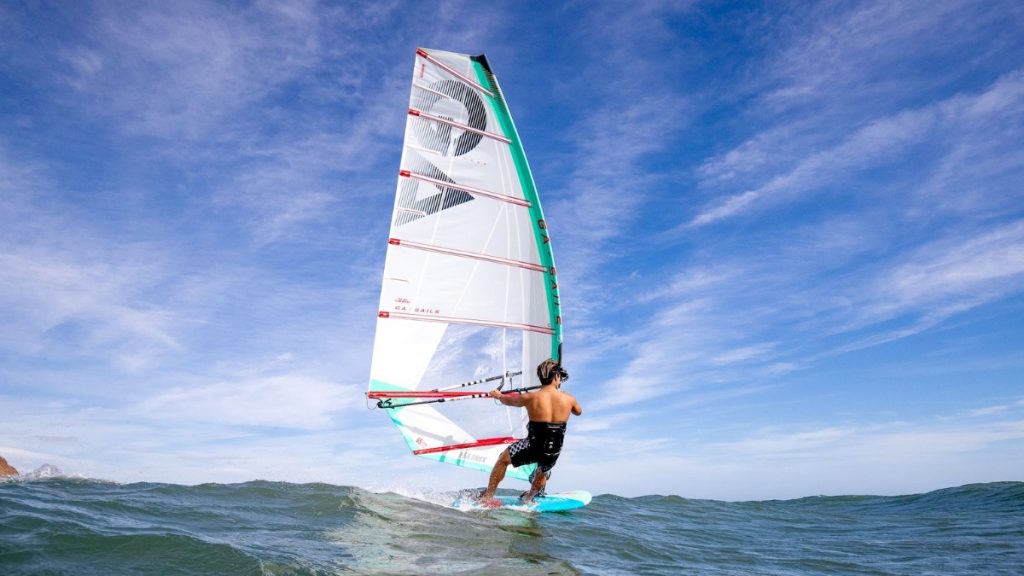
Benefits: Handling, Responsiveness & Efficiency
GA’s Continuous Radial Panel Layout brings a host of benefits that sailors will appreciate immediately on the water. Here are the key advantages of this new construction, and what they mean for your windsurfing experience:
- Optimized Load Distribution for Stability: By aligning panels (and in the Matrix-ME, fibers) along load paths, the sail’s tension is spread evenly. This yields a very stable profile – the draft of the sail stays where it’s meant to be, even when the wind gusts. You’ll notice less “breathing” or distortion in the sail, which means fewer adjustments needed to maintain control. The sail feels locked-in and confidence-inspiring when powered up, contributing to higher top-end speed potential with control.
- Fewer Seams = Smoother Feel and Lighter Weight: The continuous panels drastically reduce the number of seams in the sail. Fewer seams remove points of stiffness and slack, resulting in a smoother flex as the sail powers up. It’s often described as a more “direct” or “connected” feel to the wind. Additionally, every seam and overlap not present is weight saved. GA’s design thus makes the rig lighter in the hands. For example, the Matrix-ME’s continuous membrane allowed use of thinner film, cutting weight while still being strong. A lighter sail improves handling in maneuvers and reduces rider fatigue, especially in long sessions or marginal winds.
- Improved Responsiveness and Feedback: With the whole panel working as one unit, any input from the wind or the rider is immediately transmitted across the sail. Pumping the sail, sheeting in or out, and feeling the wind’s pressure changes are all more immediate. This responsiveness lets skilled sailors pump more effectively onto plane and trim the sail with precision. It also helps less experienced sailors, as the sail’s behavior is more predictable (no sudden collapse or surge from a section of the sail misbehaving). GA notes that eliminating cross seams led to “better feedback to the loads”, which translates to the sailor feeling more in tune with the rig.
- Enhanced Handling and Jibing: Despite the performance gains, the sails remain user-friendly. In fact, handling is improved because the sail’s profile is more coherent. The Cosmic’s two small cams still rotate effortlessly (if not more so, now that the draft forward section is a continuous panel that isn’t held back by extra seams). The Matrix, being no-cam, always had easy handling, and now it benefits from more stability without any cambers – truly an “ultimate no-cam freerace” feel. In choppy water or during chop hops, the continuous panel absorbs and releases power smoothly, giving you confidence to push harder. GA reports “smoother handling” and easier transitions as a direct outcome of the new layout. Early feedback confirms that jibing these sails is as easy as ever – the balanced load means the sail flips and powers up on the new tack without surprises.
- Greater Efficiency and Drive: Perhaps the most exciting benefit is improved aerodynamic efficiency. By keeping the sail shape more stable and reducing excess stretch, more of the wind’s energy is converted into forward drive. Riders will find they can point a bit higher upwind and maintain speed, and bear away with confidence that the sail will accelerate predictably. The term “efficiency” also extends to how the sail performs across its range – many have noted that the new Cosmic and Matrix deliver a wider wind range, remaining effective in both lighter breeze and powered conditions. GA’s own description says the CRPL yields “greater efficiency and top-end performance across all parameters.”
This means you can rig one sail size and get more out of it without feeling under or overpowered as quickly. For freeride and freerace enthusiasts, that translates to fewer sail changes and more time having fun on the water.
In summary, the Continuous Radial Panel Layout is more than just a construction tweak – it’s a holistic performance enhancement. It makes the 2025 GA Cosmic, Matrix, and Matrix-ME feel more refined and capable, whether you’re casually blasting back and forth or pushing your personal speed record. The sails carry the GA DNA of speed and power, but now with a new level of comfort and control. As one windsurf shop put it, GA has “completely reinvented” these models, managing to blend racing sail performance with the ease-of-use that freeriders love.
Conclusion
GA Sails’ introduction of the Continuous Radial Panel Layout in 2025 is a bold step that appears to be paying off. By re-engineering the Cosmic, Matrix, and Matrix-ME around the principle of continuous, load-aligned panels, they’ve delivered sails that stand out in both appearance and performance. The technical innovation – using advanced design software, new panel cuts, and in the Matrix-ME’s case, cutting-edge membrane materials – has translated into tangible benefits on the water: smoother handling, more responsive feel, and efficient power delivery. Early reviews and rider experiences suggest that these sails retain their user-friendly character (easy jibing, plug-and-play rigging) while offering a noticeable boost in stability and speed potential.
It’s also interesting to see GA pushing what’s traditionally been freeride gear closer to race sail technology. The gap between a no-cam Matrix and a full-blooded slalom sail has narrowed, meaning weekend warriors can enjoy a taste of racing performance without the hassles. At the same time, GA’s competition sails (like the Vapor) likely gain durability and consistency from the shared design philosophy. Competitors will surely be watching – and perhaps we’ll see other brands adopt similar continuous radial or membrane layouts in coming seasons, given the advantages.
For windsurfers eyeing new gear in 2025, the revamped GA Cosmic and Matrix are very compelling options. They embody “the art of being ahead,” as GA’s slogan goes, by bringing real innovation to the market. Whether you’re a GPS speed hunter, a recreational freerider, or just a gear aficionado, the Continuous Radial Panel Layout offers something truly new to experience. As GA proudly proclaims, “The result? Sails that offer smoother handling, greater efficiency and top-end performance across all parameters.” – a statement that the Cosmic, Matrix, and Matrix-ME are already living up to on the water.
Sources:
GA Windsurfing official product descriptions ga-windsurfing.com
Windsurf Magazine test notes windsurf.co.uk
and various windsurfing riders highlights
If you are interested in the entire 2025 collection of GA-SAILS visit our store

